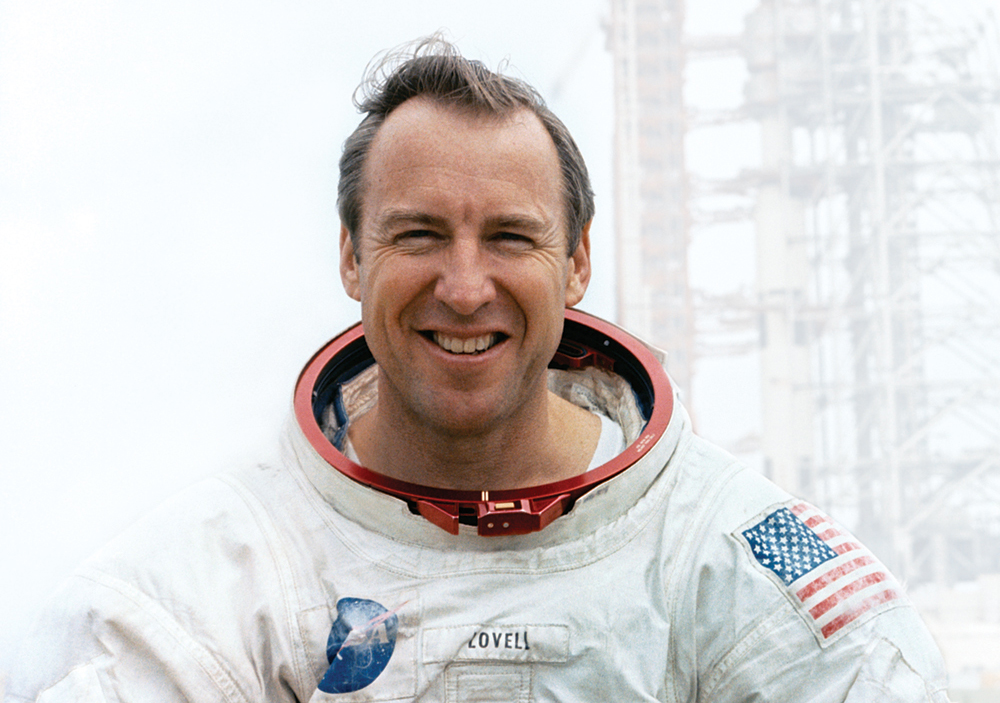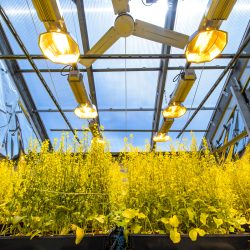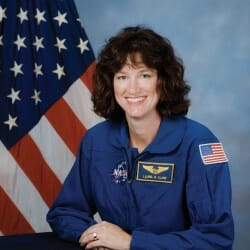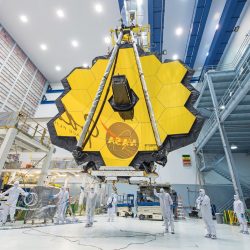The Miracle of Apollo 13
How Jim Lovell x'50 pulled off NASA’s most daring recovery.

Lovell on his near-death experience: “You just have to take a positive attitude and not give up.” Courtesy of NASA
It’s safe to say Jim Lovell x’50 is unique among former UW students. Who else has flown four space missions, two of them to the moon? After making history with Gemini 7 and 12, he and two crewmates became the first astronauts to orbit the moon with Apollo 8 in 1968. That would have been enough to make his name, but Lovell’s most astonishing feat was yet to come.
In 1970, the Apollo 13 mission was 55 hours into its journey to the moon when commander Lovell radioed Mission Control with these immortal words: “Houston, we’ve had a problem.” A tank had exploded, causing a sudden drop in oxygen and power. Almost 200,000 miles from Earth, Lovell, Fred Haise, and Jack Swigert kept their cool to pull off one of the most daring recoveries in the annals of aviation. You can read about it in Lovell’s book, Apollo 13, or watch the Tom Hanks movie of the same name.
For a living legend, Lovell is remarkably approachable. On the 50th anniversary of Apollo 13, the 92-year-old hero discusses a life’s journey that included two crucial years at the UW.
Why were you attracted to flying?
I grew up in Milwaukee in the 1930s, and all guys at that time were interested in airplanes. In high school, I read a pamphlet about reaching extreme altitudes using liquid-oxygen-type rockets. In my senior year, a friend and I built a powder rocket that went about 60 feet and blew up!
What brought you to the University of Wisconsin?
When I was in high school, the Navy offered two years at any college you wanted to go to, as long as you studied engineering. After that they would send you down to Pensacola for flight training. So that’s how I started at the University of Wisconsin. I enjoyed my time at the university quite a bit, and the training I got there and at the Naval Academy gave me the skills to work in the space pro-gram.
What was it like seeing Earth from outer space?
Earth got very small, and I could put my thumb up and hide it completely. It gave me the thought that that was my home back there, and I hope I get back. Because it was really just a small dot in space.
How did you feel when the oxygen tank exploded in the middle of the Apollo 13 mission?
It didn’t take long to figure out that landing on the moon was off. And when I saw the oxygen escaping from the rear end of my spacecraft, I realized that the command module was essentially dying, and we had to use the lunar module to get home. Amazingly, the explosion occurred at just the right time to allow a safe recovery. If it had occurred once we were in lunar orbit, or on the lunar surface, we would never have left the moon.
How did you keep your cool during the crisis?
You just have to take a positive attitude and not give up. Between the crew and Mission Control, we tried to solve one problem at a time. It was a big sigh of relief when we finally splashed down and saw the water go over the window.
Published in the Fall 2020 issue



Comments
No comments posted yet.